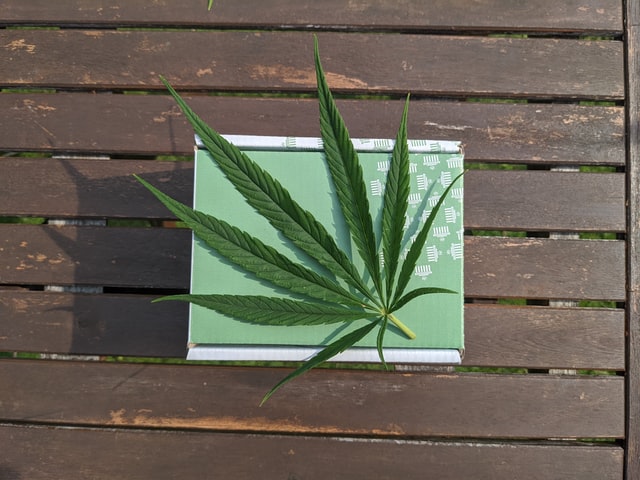The cannabis plant’s controversy goes back dozens of years. The reason for this lay in the fact that the plant contains ingredients with psychoactive properties. However, in the past few years, the plant’s bad reputation is slowly fading away. But why is that? Recent research has discovered that the plant compounds hold properties that may be beneficial to people’s health. There are many studies showing promising results on the use of the plant to treat or alleviate many conditions, including seizures, glaucoma, Parkinson’s disease, multiple sclerosis and even to reduce cancer cells.
On the other hand, today more and more countries have legalized the plant. And even in the US, cannabis is now legal in many states for medicinal or even recreational use. But in other places, the plant remains illegal to sell and use.
As we said the plant contains many compounds and, not of them hold psychoactive properties. One of the most popular is CBD, which can be easy to find in the market. Although CBD is not so popular as its cousin, the psychoactive THC, its properties, and legal status make it an interesting substance to research. But, how has CBD been used throughout the years? Keep reading this article to learn more about the history of CBD and cannabis!
Where Does CBD Come From?
Before digging into the history of CBD, we should explain what CBD is and where it comes from: CBD (short for Cannabidiol) is one of the main cannabinoids of the cannabis sativa plant. It is extracted from the seeds and leaves of the plant to prepare oils, creams, edibles and other products that can be used orally or topically to alleviate conditions such as anxiety and pain.
Although CBD is not a psychoactive substance, its use remains in some sort of gray area, and there are different opinions about the legality of the plant today. In the US, CBD is legal to sell and consume everywhere where cannabis is legal. On the other hand, the general opinion is that CBD that comes from hemp is legal, whilst CBD that comes from marihuana remains illegal.
History of Cannabis
To understand the history of CBD, we need to look at the history of cannabis first. The plant has a history that goes back over 5,000 years. It has been used for multiple purposes throughout history, i.e.: to treat and alleviate illnesses, to relax and meditate, and of course, as a recreational drug. It’s this use as a recreational substance that granted the plant its current controversy.
In the past, it was believed that cannabis was first used in Central America. However, this is not true. Today, we know that the plant’s origins are in Central Asia, and its use was first documented in the year 2737 B.C in China. Both marihuana and hemp were used back then, not only with medicinal purposes but also to produce rope and textiles.
Later on, cannabis and hemp traveled to India and Europe, where it became an ingredient to make clothes and paper. Additionally, Indo-European nomad cultures, such as the Scythians inhaled the combustion of the plant in religious and social rituals, and to treat various ailments.
The plant traveled to the Americas during the European colonization. Hernan Cortes imported Cannabis sativa and C. indica species for the native cultures to grow.
Since then, the use of this plant for industrial, medicinal, and recreational purposes has spread worldwide. In the 19th century, cannabis experienced new popularity and its use was common to treat various ailments in the US.
However, in the 20th century due to reasons that have nothing to do with science, many parts of the world scheduled the plant as a dangerous drug.

History of CBD
Although the history of the cannabis plant goes back thousands of years, the history of CBD is much more recent:
CBD was first isolated in 1940 at the University of Illinois. Back then, the common belief was that cannabidiol was a toxic substance with no properties. 20 years later, in 1963, Raphael Mechoulam determined the structure of CBD at the University of Israel. His work opened a new field of research on the constituents of cannabis.
In 1973, a group of scientists from Brazil found the anti-convulsion properties of CBD. One year later, its anxiolytic effects were discovered. Later on, other research found CBD’s capability to reduce vomit and nausea caused by chemotherapy treatment. Additionally, studies reported CBD’s sedative effects and its potential to relieve insomnia.
In the 1980s a study performed in Brazil revealed that CBD reduces seizures caused by epilepsy in children. At the same time, another study showed cannabidiol’s antipsychotic properties.
But 1988 marked a milestone in the study of cannabis and its compounds. This year, scientists first discovered the endocannabinoid system in humans and animals. This research opened the gate to new studies on CBD and medical marihuana.
Where Does CBD Stand Today?
The research on CBD and cannabis has continued in the 21st century. In recent years, new studies have evaluated the anti-inflammatory and analgesic properties of CBD and its effects on the immune system.
On the other hand, CBD and cannabis are now legal in many countries and states within the US, which makes it easier to continue researching. Additionally, the 2018 Fam Bill legalized hemp at federal level, which is a promising step forward towards the legalization of the plant.



